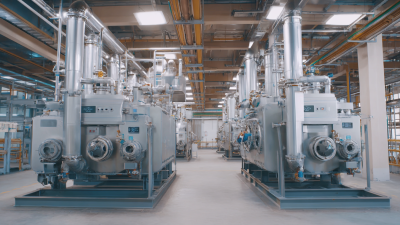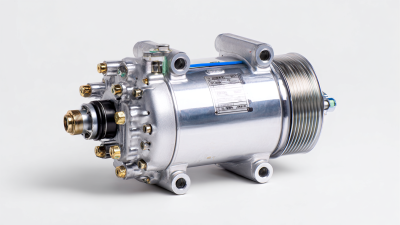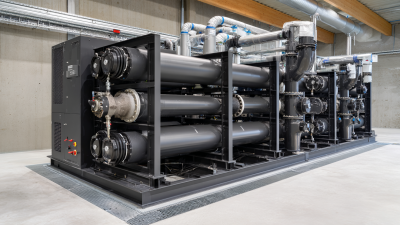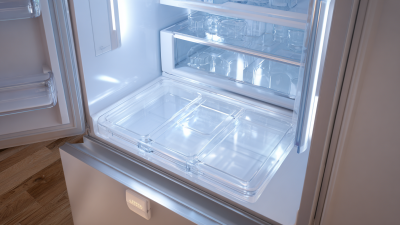
In the quest for optimal air quality and performance in HVAC systems, the significance of selecting the right Drier Filter cannot be overstated. As industry expert and air quality specialist, Dr. Robert Thompson, states, "The effectiveness of air handling systems heavily relies on the quality of the filters used; a superior Drier Filter not only enhances performance but also prolongs equipment lifespan." This sentiment resonates deeply within the HVAC community, emphasizing the need for thorough consideration when choosing a Drier Filter.
Today, consumers are presented with a myriad of options in the marketplace, each promising enhanced air purification and efficiency. However, not all Drier Filters are created equal, making it essential for both homeowners and professionals alike to understand what distinguishes the best choices from the rest. Attributes such as filtration efficiency, material quality, and compatibility with existing systems play crucial roles in this decision-making process.
This article will explore the ten best Drier Filter options currently available, offering valuable tips on how to select the ideal filter for your specific needs. By understanding these key elements, you can ensure that your air quality remains pristine, while also maximizing the performance and longevity of your HVAC system.

The significance of drier filters in maintaining optimal air quality cannot be overstated. According to a report by the Environmental Protection Agency (EPA), indoor air can be up to five times more polluted than outdoor air. Drier filters play a crucial role in mitigating this issue by capturing airborne particles, allergens, and contaminants. A quality drier filter can remove up to 95% of harmful pollutants, greatly enhancing the air we breathe in our homes and workplaces.
Moreover, specific data from the American Society of Heating, Refrigerating and Air-Conditioning Engineers (ASHRAE) indicates that proper filtration can lead to a significant reduction in respiratory ailments, with studies showing that improving indoor air quality could reduce sick building syndrome by up to 50%. Drier filters not only improve air quality but also contribute to the efficiency and longevity of HVAC systems. Utilizing high-performance filters can enhance airflow and reduce energy consumption, leading to a more sustainable environment. The strategic selection of drier filters is essential for both health and performance, underscoring their importance in everyday air quality management.
When selecting a high-performance drier filter, it’s essential to focus on several key features that directly impact air quality and system efficiency. Firstly, filtration efficiency is paramount; look for filters that can capture both large and small particles to prevent contaminants from circulating through your space. High MERV (Minimum Efficiency Reporting Value) ratings indicate better filtration capabilities. Additionally, consider filters designed with activated carbon, as they can effectively eliminate odors and chemical pollutants from the air.
Another crucial aspect is the filter's airflow resistance. A filter with low resistance will maintain optimal airflow, ensuring that your HVAC system operates at peak efficiency. This not only enhances air quality but also extends the lifespan of your system by reducing strain. Be sure to check the recommended filter replacement intervals as well. Choosing washable or reusable filters can be a more sustainable option, saving you money in the long run while also improving air quality.
Tips: Regular maintenance of your drier filters is vital. Schedule routine checks to ensure they are not clogged, as this can compromise both air quality and system performance. Additionally, keep an eye out for innovative features like antimicrobial coatings, which can help inhibit the growth of bacteria and mold within the filter, providing an extra layer of protection for your indoor air environment.

When it comes to ensuring optimal efficiency in your HVAC system, choosing the right drier filter is crucial. This component plays a significant role in maintaining air quality by removing moisture and contaminants from the air, hence preventing system damage and improving overall performance. The top choices in the market today are specifically designed to cater to different needs, including efficiency, durability, and ease of installation.
Among the best options available are filters made from advanced materials that enhance their ability to trap particles while allowing for smooth airflow. For instance, filters equipped with activated carbon or HEPA technology provide superior filtration, significantly reducing allergens and pollutants. Users have reported noticeable improvements in both air quality and system performance after upgrading to these high-efficiency filters. Furthermore, many of these drier filters are designed for easy maintenance, allowing homeowners and businesses to replace them without professional assistance, thus ensuring the longevity of the HVAC system and consistent air quality.
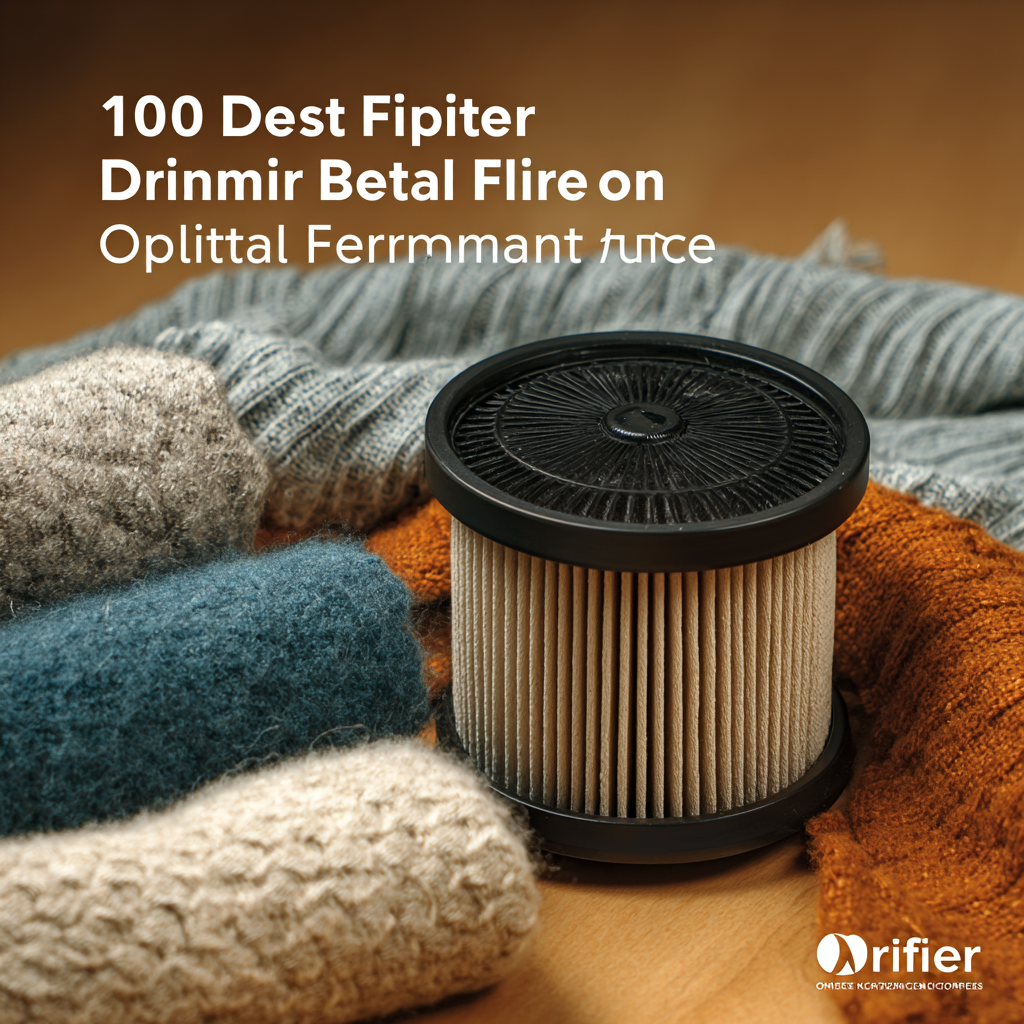
When comparing the cost and performance of leading drier filters, various aspects come into play, such as filter efficiency, maintenance costs, and overall air quality improvement. According to the Air Conditioning, Heating, and Refrigeration Institute (AHRI), high-efficiency particulate air (HEPA) filters can capture up to 99.97% of particles measuring 0.3 microns. While HEPA filters tend to be more expensive upfront, costing around $30 to $200 depending on size and manufacturer, they can lead to decreased energy costs over time thanks to enhanced airflow dynamics.
On the other hand, standard drier filters might be more affordable, generally costing between $10 and $50. However, they often struggle with high particulate capture rates, often around 70-90% efficiency. According to a recent report from the Environmental Protection Agency (EPA), using lower-efficiency filters could lead to higher operational costs due to increased energy consumption during filtering. Therefore, while initial costs are significant, the long-term sustainability and efficiency of drier filters underline the importance of considering premium options for optimal air quality and performance.
| Filter Type | Efficiency Rating (%) | Cost ($) | Lifespan (Months) | Noise Level (dB) |
|---|---|---|---|---|
| Electrostatic | 95 | 45 | 12 | 40 |
| HEPA | 99 | 60 | 18 | 35 |
| Activated Carbon | 90 | 50 | 6 | 50 |
| Fiber | 85 | 30 | 9 | 45 |
| Pleated | 88 | 40 | 12 | 42 |
| Washable | 92 | 70 | 36 | 38 |
| Nano-Fiber | 97 | 80 | 24 | 30 |
| Ceramic | 90 | 65 | 15 | 55 |
| Synthetic | 83 | 20 | 9 | 50 |
| Carbon-Infused | 94 | 75 | 20 | 34 |
Maintaining your drier filters is crucial for ensuring optimal air quality and system performance. Regular maintenance can significantly extend the lifespan of these filters and improve the efficiency of your HVAC system. According to the U.S. Department of Energy, replacing or cleaning heating and cooling system filters every 1-3 months can result in energy savings of 5-15%. This not only helps you save on energy costs but also reduces airborne pollutants, leading to a healthier indoor environment.
To maximize the lifespan of your drier filters, consider implementing a routine maintenance schedule. Regular inspection and cleaning can help identify issues early on, potentially avoiding costly repairs down the line. Data from the American Society of Heating, Refrigerating and Air-Conditioning Engineers (ASHRAE) suggests that air quality can be improved by up to 50% through proper filter maintenance. Furthermore, utilizing high-efficiency filters can capture smaller particles, which traditional filters may miss. This also helps in reducing the load on your HVAC system, ultimately leading to a longer operational life and lower maintenance costs.
